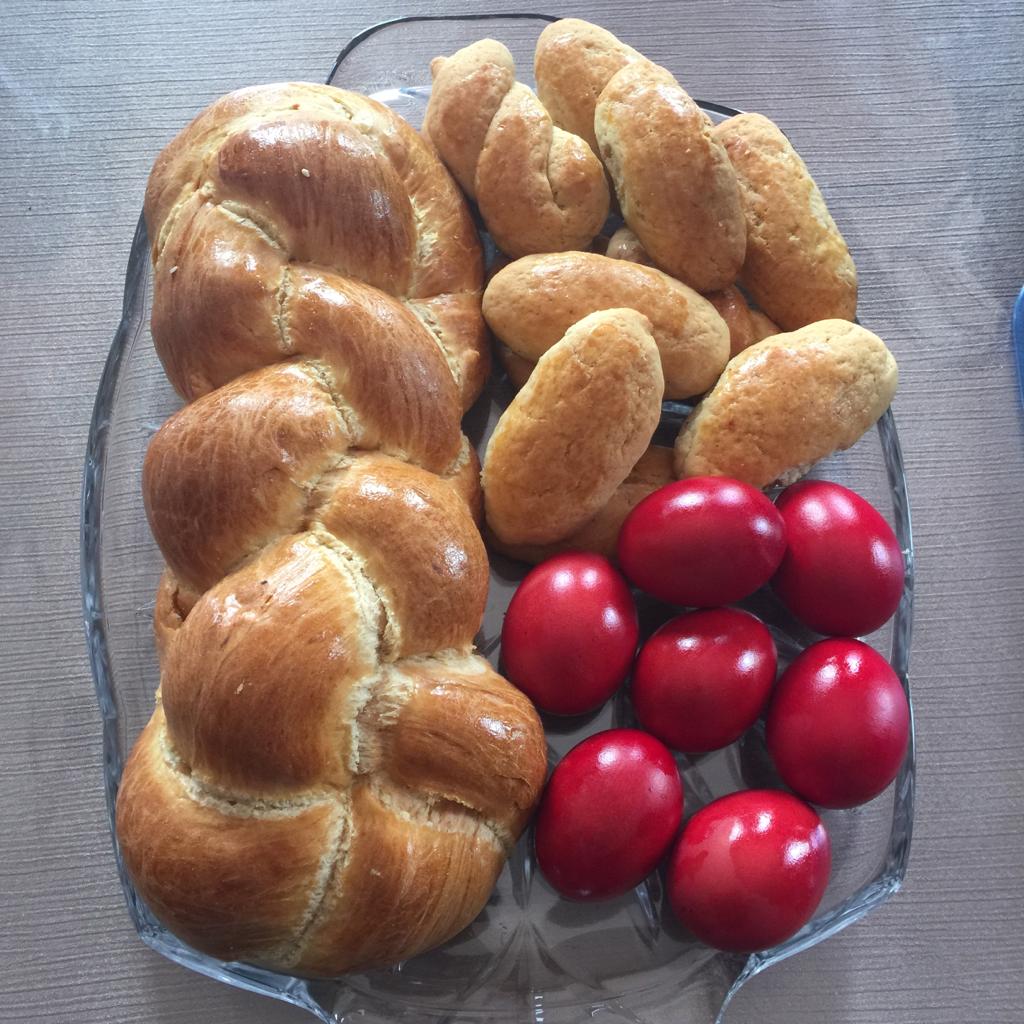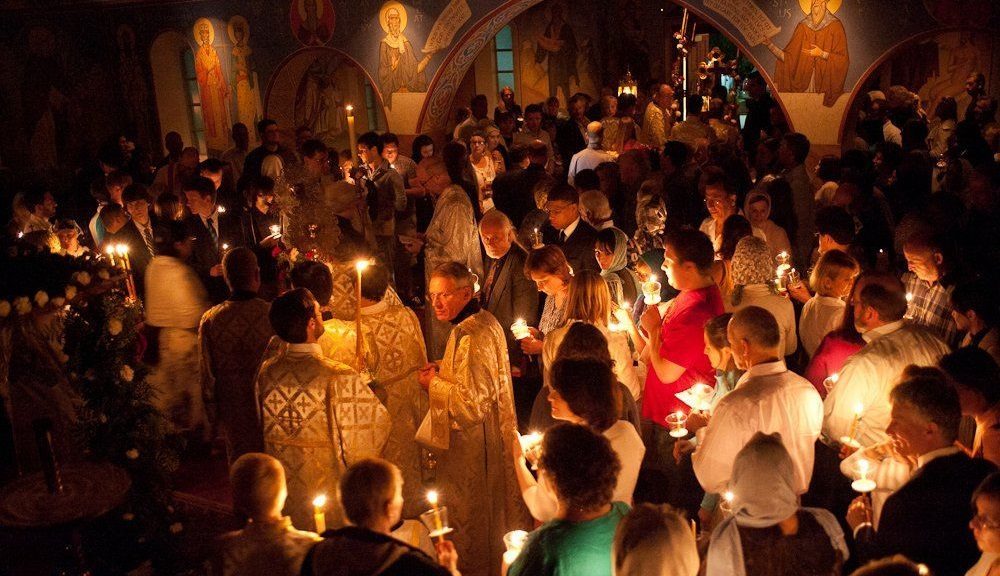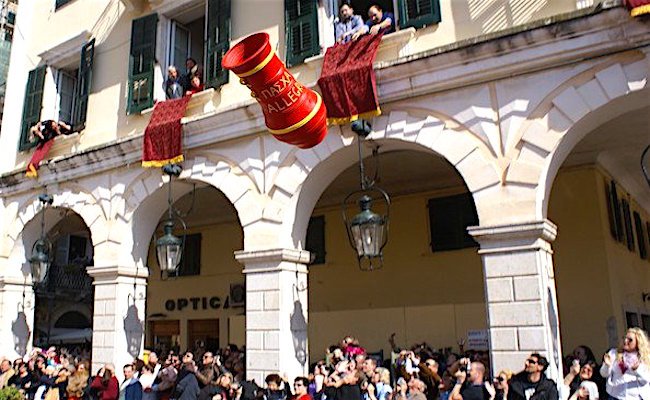Every year, Orthodox Easter is celebrated on a Sunday, however, the precise date varies. Not only does it vary each year, but it also varies between Catholic and Orthodox Easter. This is because Catholics follow the Gregorian calendar while Orthodox Christians follow the Julian calendar.
The celebration and observation of Greek Orthodox Easter begins with a 40 day fast during which people are meant to give up eating all meat. This continues until the arrival of Holy Week (the week before Easter) which carries many traditions with it. For most religious people, they give up all animal products this week. On the Thursday before Easter, Greeks prepare for the festivities by baking a sweet bread called Tsoureki. This is eaten on Easter day as the three twists or braids in the bread represent the Holy Trinity.

Tsoureki (on the left) and Dyed Eggs (on the right) with some traditional Greek cookies
On Good Friday, the atmosphere is somber as people mourn Jesus’ death and crucifixion. In Greek towns and even in many Greek Churches around the world there are elaborate tombs that are decorated and carried throughout the town. People of the neighborhood walk with the tomb, in Greek the επιτάφιο (“epitafio”). This represents a funeral procession of sorts.
Late on Saturday night, the night before Easter, everyone heads to Church around midnight. Once the clock strikes twelve everyone welcomes in Easter by singing the hymn χριστός ανέστη (“Christos Anesti”).
Greek Version:
Χριστὸς ἀνέστη ἐκ νεκρῶν
θανάτῳ θάνατον πατήσας
καὶ τοῖς ἐν τοῖς μνήμασι
ζωὴν χαρισάμενος.English Translation:
Christ is risen from the dead,
Trampling down death by death,
And upon those in the tombs
Bestowing life!
At the same time, the Priest brings out a lit candle, in Greek the φως (“fos”) which means light, and is meant to represent Jesus’ eternal flame. Everyone brings their own candles to receive this light and take it back to their homes. They then use it to bless their home and themselves.

The “light” received early Easter Sunday morning
In one of the most notable traditions, Greeks also dye hard-boiled eggs red on Thursday before Easter. This is meant to symbolize the color of Christ’s blood. Once Greeks head home from Church on Saturday night/early Sunday morning the egg cracking begins. Each person chooses an egg that seems the strongest and everyone takes turn smashing their eggs against the others. One person says “Christos Anesti” meaning “Christ has risen” and the other responds with “Alithos Anesti” meaning “Indeed he did.” Whichever egg remains uncracked at the end is the winner and is said to have good luck for the year. Also on early Sunday morning, Greeks eat a traditional soup called “Magiritsa” which contains lamb offal and different vegetables. This is the first breaking of the meat fast.

The traditional “Magiritsa” soup
Finally, on Easter day it is a huge celebration with a lot of meat to break the forty day fast. It is traditional to have a lamb roasting on a spit as well. In Greek culture, most people give their children names that are represented by a saint in the religion in order to honor the saint. Therefore, each saint has a day that corresponds with the name given which is the day that the saint died. That is someone’s “Name Day” and every Easter is the Name Day for anyone names “Anastasia” or “Anastasios” because that name means resurrection.
Overall, Easter day is a huge celebration for those who celebrate and it has a lot of traditions leading up to the day of.






